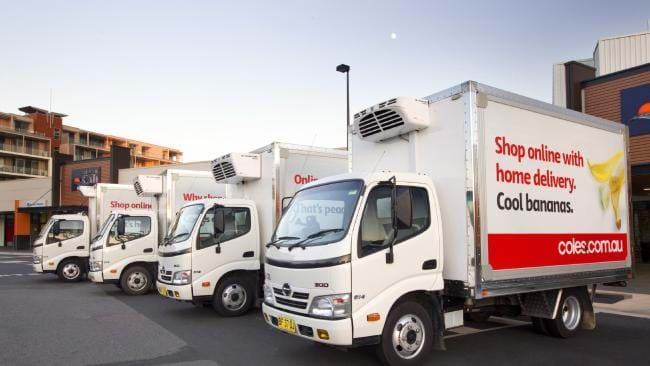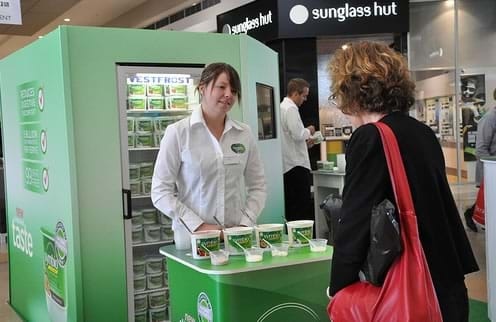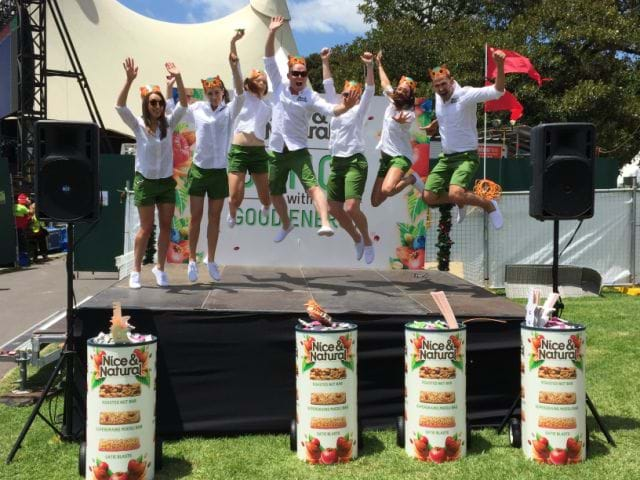Sampling techniques
When thinking of free samples we inevitably think about food and drink, because the food and beverage industries have made sampling an integral part of their marketing strategy for years. Despite how quickly our world is changing, and the technology that goes with it, the tradition of sampling still lives on albeit in a more non-traditional way.
Retail
Food sampling in grocery stores and shopping malls from a demonstration table or a vendor tray is the most recognisable form of sampling for consumers. It encourages them to taste the foods just a few feet away from the product and the cash register, thereby securing the potential for fast and easy sales.
Office
In-Office sampling has recently been recognised by marketers as a huge untapped opportunity with large numbers of professional people gathered in one place. Although there is the risk of it being intrusive, most recipients are more than happy to have a sample left on their desk!
Outdoor sampling
Experiential campaigns and roadshows are definitely a great way to make a noise in an outdoor space. The use of vendor bikes and sampling trays are a great way to move around the crowd and cover ground. Roadshows not only have a presence but also have a way of drawing in the crowds, enabling customers to sample and ‘experience’ the brand.
From the company
Although not a traditional technique, companies are finding themselves having to offer free samples to concerned customers who call up to find out what ingredients are in their products. To exude a sense of confidence and transparency most companies are happy to send out a free sample of the product in question along with other complimentary products.
Food delivery
Time is a precious commodity and grocery shopping online is becoming commonplace in much of Australia. The food delivery revolution, whether it’s from Coles or from your local egg supplier, is becoming a given in many households. With these delivery services, food companies large and small have the opportunity to get samples out by utilising this delivery channel.

Technology
Technology is all around us and some companies are utilising technology to encourage consumers to sample their products. Doritos, for example, created a ‘scannable’ chip. This chip was only included amongst the three new flavours of ‘3D Jacked’ Doritos. Once purchased, the customer scanned a physical chip with a phone and it gave access to cool 3D videos and more. This use of technology is clever as it not only ensures consumers buy your product, it is also likely that they taste the chips too.
Why sampling works
There are many options available to connect consumers with free samples, but actual sampling seems to be a solid strategy for many food companies. According to recent research by Time magazine – “In terms of reaching consumers, free samples are often much more powerful, and much cheaper than traditional advertising”. Here are a few reasons why we think sampling works.
Price
Sampling gives everyone the opportunity to taste or test something, no matter what the price point. Often the only thing standing between a consumer and a product is the price. Offering a free sample means consumers can try products that are potentially outside their budget — products they otherwise might never have tried.
Commitment
No matter what the price point, some consumers may not want to commit to a purchase straight away. By offering a free sample it gives them the chance to test it out at the risk of not liking it.
Taste
Often the best way to launch a new food product is simply through taste. Free samples break down the barrier between consumers and products, and allow them to try something they may have never tried before.
Regardless of traditional marketing like ads or packaging, consumers may not always be convinced they will like a product, even if it is a type of food they enjoy, until they taste it.
Reciprocation
We humans are funny creatures, and although a free sample generally means no strings attached, some consumers will feel obliged to purchase the product after getting something for free.
So in summary, sampling was big in the mid-20th century, and it still remains a key part of a marketing strategy. Consumers love getting things for free, so companies can capitalise on this by continuing to bring samples to the masses, whether through traditional retail or a more innovative route.
Take a look at our sampling solutions for your next event, exhibition or roadshow.


